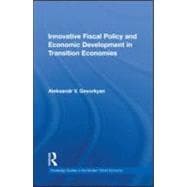
Note: Supplemental materials are not guaranteed with Rental or Used book purchases.
Purchase Benefits
What is included with this book?
| List of figures | p. xii |
| List of tables | p. xv |
| Foreword | p. xvii |
| Preface | p. xix |
| Economics of transition in the new century: lessons learned and a future outlook | p. 1 |
| Introduction | p. 1 |
| Before the shock: notes on the political economy from 1960 to 1990 | p. 2 |
| What happened in the 1990s: more on political economy | p. 6 |
| Macroeconomic overview of the 2000s | p. 10 |
| Conclusion | p. 23 |
| Appendix | p. 25 |
| Fiscal policy in the newly opened economies: are there twin deficits? | p. 29 |
| Introduction | p. 29 |
| Fiscal balance and current account in the first decades of transition | p. 30 |
| Theory and some empirics of twin deficits reexamined | p. 33 |
| Main theoretical model and data discussion | p. 38 |
| Empirical results analysis | p. 40 |
| Some extensions to the main model | p. 43 |
| Conclusion | p. 56 |
| Appendix | p. 58 |
| Fiscal policy sustainability in transition: is it there? | p. 69 |
| Introduction | p. 69 |
| Transition period fiscal policy trends | p. 70 |
| Some theoretical aspects of fiscal policy in transition | p. 79 |
| Theoretical model and data discussion | p. 82 |
| Empirical results discussion | p. 85 |
| Policy conclusions | p. 90 |
| Innovative fiscal policy: the how, when, and why of borrowing from the diaspora | p. 94 |
| Introduction | p. 94 |
| Fiscal policy for growth and development: transition peculiarities | p. 95 |
| Diaspora and transition economies | p. 98 |
| From "fiscal diamond" to "fiscal net" | p. 101 |
| The Diaspora bond in transition economies | p. 105 |
| Conclusion | p. 111 |
| Appendix | p. 112 |
| Innovative fiscal policy: tackling labor migration problems | p. 118 |
| Introduction | p. 118 |
| Labor migration trends in transition economies | p. 120 |
| Temporary labor migration triad | p. 128 |
| The Diaspora regulatory mechanism | p. 130 |
| The Migration Development Bank | p. 133 |
| Conclusion | p. 137 |
| Appendix | p. 138 |
| J-curve: facing exchange rate and current account fluctuation risks in the open economies of the CIS | p. 140 |
| Introduction | p. 140 |
| What is the J-curve? Exposition and literature review | p. 142 |
| Theoretical model | p. 153 |
| Data description | p. 154 |
| Review of the empirical results | p. 155 |
| Testing for main results robustness | p. 161 |
| Conclusions and policy implications | p. 164 |
| Appendix A | p. 166 |
| Appendix B | p. 176 |
| A model of fiscal policy, currency crisis, and foreign exchange reserves dynamics | p. 181 |
| Introduction | p. 181 |
| Some theory, empirics, and stylized facts of international experience | p. 182 |
| Stylized facts from the CIS | p. 187 |
| A two country-group theoretical model with foreign reserves | p. 192 |
| Numerical analysis and possible scenarios | p. 196 |
| Conclusion and possible policy implications | p. 206 |
| Appendix | p. 209 |
| Fiscal policy lessons for the CIS beyond the economic crisis of 2008-2009 | p. 212 |
| Introduction | p. 212 |
| The crisis in the CIS: the case of Russia | p. 213 |
| The crisis in the CIS: the case of the net exporters | p. 222 |
| The crisis in the CIS: the case of (he net importers | p. 226 |
| Policy implications for two country groups | p. 230 |
| Final remarks | p. 233 |
| Endnotes | p. 238 |
| Bibliography | p. 244 |
| Index | p. 256 |
| Table of Contents provided by Ingram. All Rights Reserved. |
The New copy of this book will include any supplemental materials advertised. Please check the title of the book to determine if it should include any access cards, study guides, lab manuals, CDs, etc.
The Used, Rental and eBook copies of this book are not guaranteed to include any supplemental materials. Typically, only the book itself is included. This is true even if the title states it includes any access cards, study guides, lab manuals, CDs, etc.